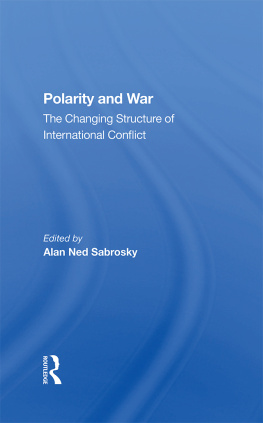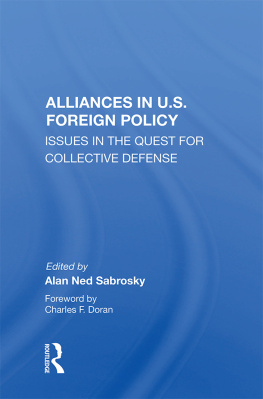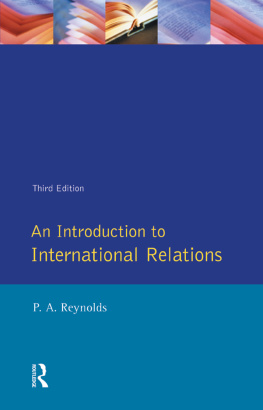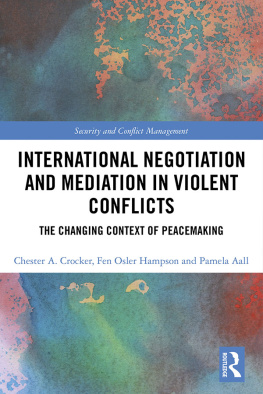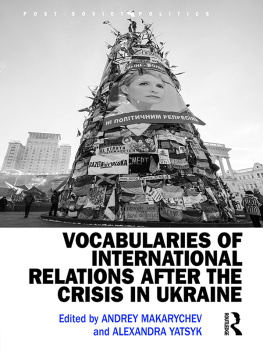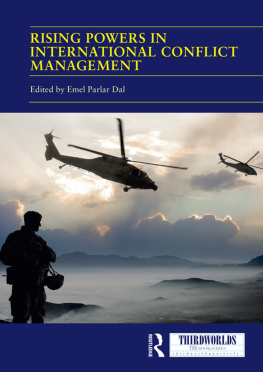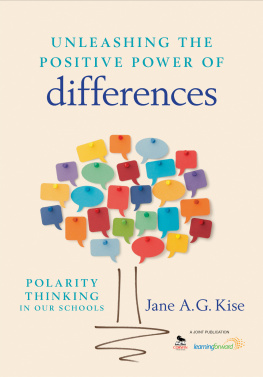Polarity and War
Westview Special Studies
The concept of Westview Special Studies is a response to the continuing crisis in academic and informational publishing. Library budgets are being diverted from the purchase of books and used for data banks, computers, micromedia, and other methods of information retrieval. Interlibrary loan structures further reduce the edition sizes required to satisfy the needs of the scholarly community. Economic pressures on university presses and the few private scholarly publishing companies have greatly limited the capacity of the industry to properly serve the academic and research communities. As a result, many manuscripts dealing with important subjects, often representing the highest level of scholarship, are no longer economically viable publishing projects--or, if accepted for publication, are typically subject to lead times ranging from one to three years.
Westview Special Studies are our practical solution to the problem. As always, the selection criteria include the importance of the subject, the work's contribution to scholarship, its insight, originality of thought, and excellence of exposition. We accept manuscripts in camera-ready form, typed, set, or word processed according to specifications laid out in our comprehensive manual, which contains straightforward instructions and sample pages. The responsibility for editing and proofreading lies with the author or sponsoring institution, but our editorial staff is always available to answer questions and provide guidance.
The result is a book printed on acid-free paper and bound in sturdy, library-quality soft covers. We manufacture these books ourselves using equipment that does not require a lengthy make-ready process and that allows us to publish first editions of 300 to 1000 copies and to reprint even smaller quantities as needed. Thus, we can produce Special Studies quickly and can keep even very specialized books in print as long as there is a demand for them.
About the Book and Editor
A fundamental transformation is underway in the structure of the international political system, with changes in both the definition and the distribution of power in world politics. But the precise extent of those changes and their implications for the conduct of foreign affairs remain unclear. The contributors to this book draw upon a common data base to provide the most current assessment available of the relationships among power, alliance, polarity, and international conflict in today's emerging world system.
Alan Ned Sabrosky is director of studies at the Strategic Studies Institute of the U.S. Army War College and a professorial lecturer at Georgetown University and at The Johns Hopkins School of Advanced International Studies.
Polarity and War
The Changing Structure of International Conflict
edited by
Alan Ned Sabrosky
First published 1985 by Westview Press, Inc.
Published 2019 by Routledge
52 Vanderbilt Avenue, New York, NY 10017
2 Park Square, Milton Park, Abingdon, Oxon OX14 4RN
Routledge is an imprint of the Taylor & Francis Group, an informa business
Copyright 1985 Taylor & Francis
All rights reserved. No part of this book may be reprinted or reproduced or utilised in any form or by any electronic, mechanical, or other means, now known or hereafter invented, including photocopying and recording, or in any information storage or retrieval system, without permission in writing from the publishers.
Notice:
Product or corporate names may be trademarks or registered trademarks, and are used only for identification and explanation without intent to infringe.
Library of Congress Catalog Card Number: 85-11598
ISBN 13: 978-0-367-28315-5 (hbk)
TO J. DAVID SINGER AND MELVIN SMALL
Contents
, Alan Ned Sabrosky
, David Garnham
, Jeffrey A. Hart
, Jack S. Levy
, Richard J. Stoll and Michael Champion
, Michael Wallace
, Frank Wayman
, Alan Ned Sabrosky
, Michael F. Altfeld
, Alan Ned Sabrosky
Any intellectual enterprise is a collective effort, regardless of the number of names that appear on the title page. This is especially true in the case of an edited collection of papers. Certainly, the advice and patience of the individual authors have been as noteworthy as the high quality of their work, and I am genuinely grateful to one and all. Thanks are also due Monika Owens and Marianne Anooshian, who typed initial drafts of these papers; and to my secretary, assistant and friend, Janet Smith, whose craftsmanship produced the final draft of the manuscript. Finally, I am indebted to my many colleagues on the Correlates of War (COW) project at the University of Michigan, past and present alike, whose professional and personal companionship has meant so much over the years.
Alan Ned Sabrosky
March 1985
1
Introduction: Polarity and War
Alan Ned Sabrosky
It has become increasingly clear that a fundamental transformation has been taking place in the structure and processes of the international political system. International relations no longer are dominated by the ideological hostility and geopolitical intransigency that had obtained during the most intense phase of the Cold War, occasional relapses notwithstanding. Changes have occurred in both the definition and the distribution of power in world politics. Only the precise extent of those changes, and their implications for the conduct of foreign affairs in the global arena, remain unclear.
One of the clearest interpretations of the possible political ramifications of this situation appeared several years ago with the proclamation of the so-called "Nixon (or Nixon- Kissinger ) Doctrine."power centers would share the superpowers' interest in maintaining stability.
In the years since the Nixon Doctrine was enunciated, it has become all too obvious that many of its claims were overstated, reflecting American preferences rather than political reality. Like a modern-day Canning, the United States had turned to a "New World" of five major powers to "redress the balance of the Old" bipolar world which the United States alone was no longer able to maintain. But it became apparent early in the game that the multipolar balance of power envisioned by the Nixon Doctrine was little more than a chimera. The waning of bipolarity had not seen the rise of new centers of influence joining the United States and the Soviet Union at the apex of the structure of world power. The basic conflict of interests which helped produce the Cold War had not been resolved, and the notion of detente--once extolled as the best hope for "peace in our time"--has been subjected to an increasingly critical scrutiny. Certainly, the discord attending the negotiations for arms control agreements, Soviet adventurism in Afghanistan, US involvement in Central America, and the absence of a basic accord among the various principal actors on a wide range of issues underscore both the transitional character of the international system and the fragility of whatever stability currently obtains therein.
The fact that we now hear little of multipolarity and virtually nothing of the Nixon Doctrine and its various derivatives does not necessarily mean that their central tenets were wholly mistaken. Quite the contrary. The world has moved beyond the bipolarity characteristic of the most intense days of the Soviet-American "Cold War." To be sure, the two superpowers remain at the head of the international order, especially in military terms. But power has diffused; new centers have appeared, or are taking shape, while other once-powerful states seem to be declining in stature; and international relations have become more complex in an increasingly interdependent world, with obvious consequences for the conduct of US foreign policy.


